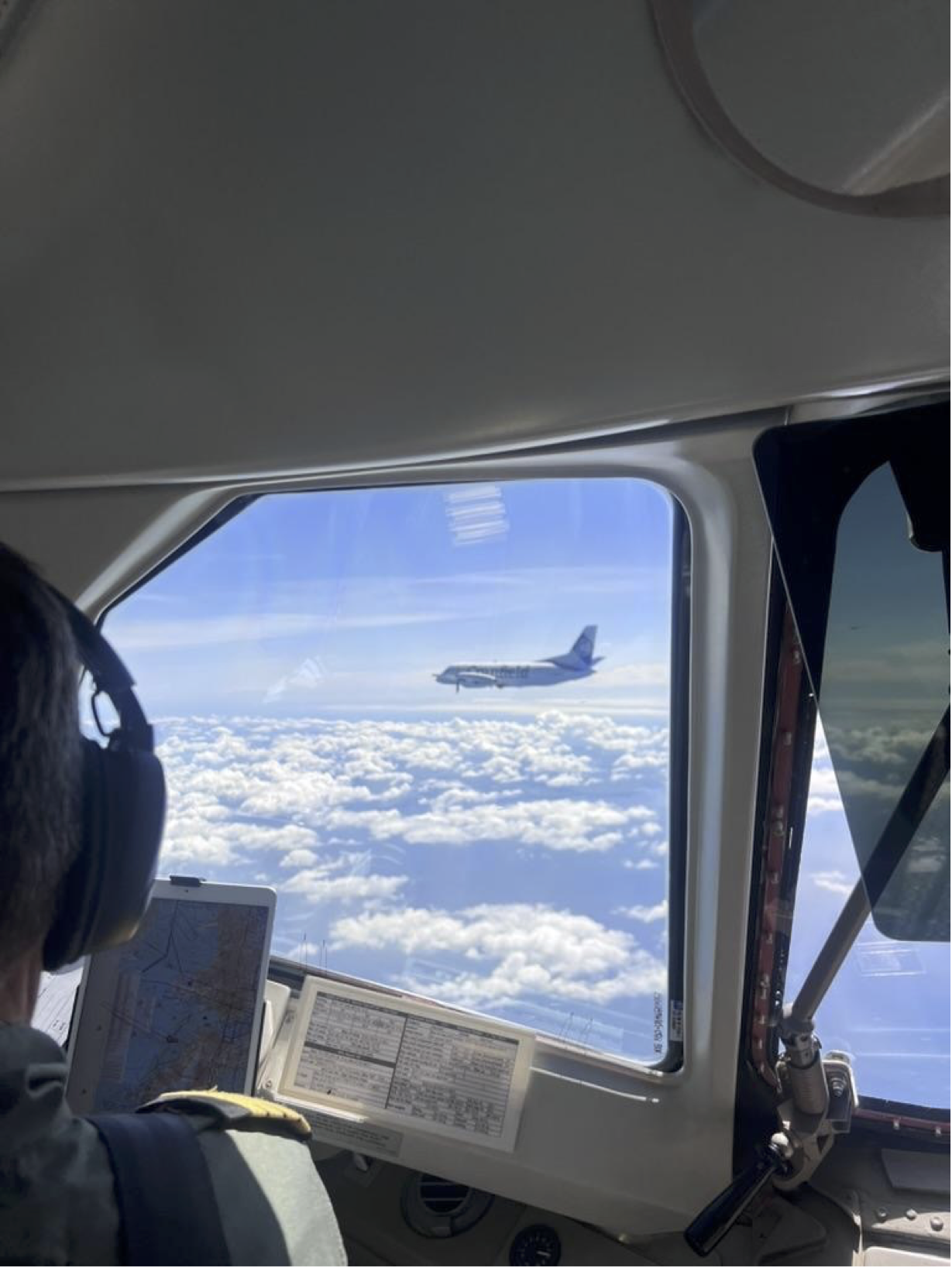Scientists launch UK’s first sustainable aviation fuel emissions “chase” experiment.
Posted on Thursday 22 May 2025

A pioneering project called GRIM-SAF (GRound-Based and Inflight Measurements) is investigating how sustainable aviation fuel (SAF) could reduce aircraft emissions of soot and volatile particles, and a range of gases including nitrogen oxides, often referred to as the non-carbon dioxide (CO2) emissions.
Scientists from the Wolfson Atmospheric Chemistry Laboratories and the National Centre for Atmospheric Science, working with collegues from Cardiff University, the University of Manchester, Manchester Metropolitan University, and Rolls Royce, this research marks a major step forward in understanding how different aviation fuels change the impact of flying on air quality and the climate.
In a UK-first experiment, two aircraft flew in formation – with one trailing the other to sample its emissions – to compare the pollutants produced by sustainable aviation fuel and traditional jet fuel. The aircraft were able to get within just 60 metres of each other. Both aircraft also landed at RAF Brize Norton to make detailed ground-based measurements with the goal of linking this to the in-flight work.
In particular, the experiment aimed to monitor non-CO2 emissions to ensure that sustainable fuels do not introduce new problems into the atmosphere. Specifically, it is important to minimise nitrogen oxides, known as NOx, which are significant contributors to air pollution, impacting air quality and affecting our climate.
The non-CO2 emissions and other substances, such as lubrication oil vented from engines, can also cause contrails to form. Contrails are long, thin clouds made of ice crystals, which form when water vapour condenses on the tiny particles emitted by aircraft engines. Contrails sometimes spread out over large areas, and can affect the Earth’s climate in the same way as naturally-formed clouds.
By gaining a better understanding of such processes, it is hoped that sustainable fuels will be better for the planetary atmosphere in a more holistic way than simply reducing CO2.
A key goal of this experiment was to correlate emissions on the ground with emissions in the air, so that in future, environmentally costly experiments with aircraft flying in formation can be avoided, and hopefully the impact of new fuels can be monitored using simple ground-based experiments.
From York, Dr Ruth Purvis led the ground based experiment, Prof James Lee led the aircraft based experiment, Dr Jim Hopkins was involved in the ground based setup, experiment and analysis of whole air sample bottles from air and ground, and MChem student Jake Job took air samples on the FAAM research aircraft.
